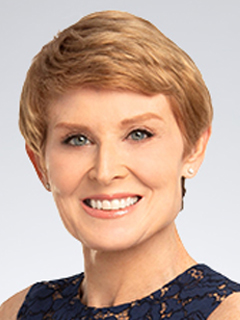Tariffs effects spotty in June CPI
We are sticking to our forecast for one cut in December.

July 15, 2025
The consumer price index (CPI) rose 0.3% in June, more than triple the pace of May, and the strongest monthly gain since January. That translates to a 2.7% gain from a year ago, up from 2.4% last month and the hottest annual rate since February.
Food prices at and away from home rose 0.3%. Food at home moved up 0.3% with gains in three of the six major indices more than offsetting a decline in the remaining three. They are some of the categories most susceptible to tariffs.
Coffee continued its upward march and is now up more than 13% from a year ago. (That’s an eye opener.) The only other food category to outpace those gains when measured on a year-over-year basis is eggs, which are still up more than 20% from a year ago despite a drop in June.
Food away from home moved up more than food at home, rising 0.4%. The bulk of those increases were due to higher prices at full-service restaurants, employee sites and schools. Gains in the cost of limited-service options were more muted, reflecting a pullback by low-income consumers.
Energy prices picked up, aided by a rebound in gasoline prices. Oil prices picked up in June as tensions in the Middle East flared and remained close to 13% above the trough hit in May.
The core CPI, which strips out the volatile food and energy components, rose a more moderate 0.2% in June. That translates to a 2.9% increase from a year ago, up from the 2.8% pace of the last three months. The bulk of that moderation was due to a slowdown in shelter costs. Those costs account for nearly one-third of the overall CPI index and an even larger share of core CPI. A cooling of apartment rents and another drop in hotel room rates accounted for the weakness.
Apparel prices continued to cool, as much of what is on store shelves today was ordered ahead of tariffs. Some retailers have discounted existing inventories to shore up their cash flow and blunt the blow of tariffs later this summer. Brace for a more costly back-to-school shopping season.
New and used vehicle prices fell slightly. Those declines will be short-lived. Many of the vehicles ordered after tariffs went into effect did not hit dealer lots until late June. That is when we started to see more announcements of price hikes which will likely show up in July. The auction value of used vehicle prices rose 1.6% in June. Those data tend to lead used vehicle prices in the CPI by about a month and will also show up in July.
The imprint of tariffs was more noticeable in price hikes for furniture, major appliances, tools, sporting equipment and computers. Those goods are either imported or include heavily tariffed inputs, such as steel and aluminum. Smart phones and pharmaceuticals remain exempt from tariffs, for now. (Investigations into pharmaceutical and semiconductor tariffs are underway.)
The super core service component of the index rose 0.4% and was up 3.8% from a year ago, its hottest pace since February. Gains were broad-based, which is a bit of surprise. This was an area that had been cooling. The data tend to have a lot of seasonal problems, which could explain part of the rebound in June. The outlier was airfares, which continued their descent.
Only two of the nineteen participants at the June meeting were looking to cut rates in July – Governors Christopher Waller and Miki Bowman.

Diane Swonk
KPMG Chief Economist
Bottom Line
The front-running of tariffs earlier this year helped blunt but not derail the bump in inflation due to tariffs in June. Brace for larger increases as we move into July and August, as the back-to-school shopping ramps up. Today’s data will not change the Federal Reserve’s “wait and see” stance when it meets next week. Only two of the nineteen participants at the June meeting were looking to cut rates in July – Governors Christopher Waller and Miki Bowman. The remainder were looking for two or less; a significant minority – 7 of 19 – expected no rate cuts this year. We are sticking to our forecast for one cut in December.
Explore more

Inflation falls short
Fed remains on sidelines most of 2025.

KPMG Economics
A source for unbiased economic intelligence to help improve strategic decision-making.

Walking a tightrope: Biannual economic outlook
Aggressive rate cuts could destabilize the bond market.
Subscribe to insights from KPMG Economics
KPMG Economics distributes a wide selection of insight and analysis to help businesses make informed decisions.
Meet our team
